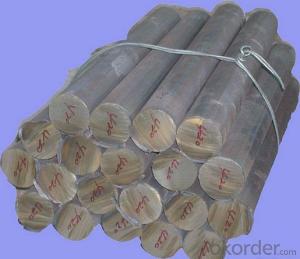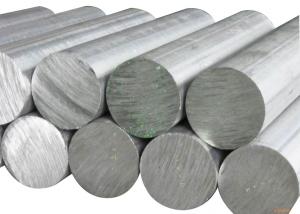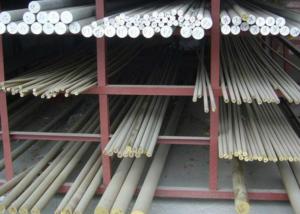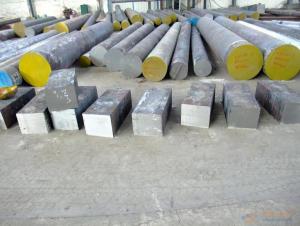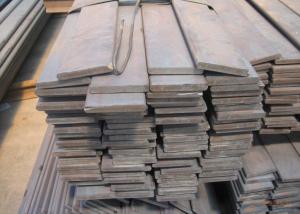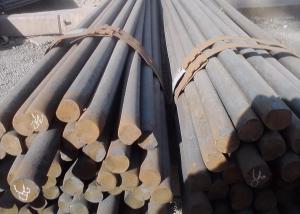Alloy Steel Bar 25MoCr4 Steel Round Bar
- Loading Port:
- China main port
- Payment Terms:
- TT OR LC
- Min Order Qty:
- 25 m.t.
- Supply Capability:
- 10000 m.t./month
OKorder Service Pledge
OKorder Financial Service
You Might Also Like
Item specifice
Designation by Standards
| Brand Name | LH No. | Mat. No. | DIN | EN | AISI |
| 25MOCR4 | 782 | 1.7325 | 25MoCr4 | - | 8625 |
Chemical Composition (in weight %)
| C | Si | Mn | Cr | Mo | Ni | V | W | Others |
| 0.25 | 0.30 | 0.70 | 0.50 | 0.50 | - | - | - | - |
Mechanical properties
1.7325, DIN 25MoCr4, AISI 8625 Mechanical properties,Our production completely according to the 1.7325, DIN 25MoCr4, AISI 8625 standards to meet the 1.7325, DIN 25MoCr4, AISI 8625 mechanical performance, can also according to the customer request, to meet the requirements of customers of 1.7325, DIN 25MoCr4, AISI 8625 mechanical properties.
Heat treatment
1.7325, DIN 25MoCr4, AISI 8625 Heat treatment,Our production completely according to the 1.7325, DIN 25MoCr4, AISI 8625 standards to meet the 1.7325, DIN 25MoCr4, AISI 8625 Heat treatment, can also according to the customer request, to meet the requirements of customers of 1.7325, DIN 25MoCr4, AISI 8625 Heat treatment.
Machining
1.7325, DIN 25MoCr4, AISI 8625 Machining,Our production completely according to the 1.7325, DIN 25MoCr4, AISI 8625 standards to meet the 1.7325, DIN 25MoCr4, AISI 8625 Machining, can also according to the customer request, to meet the requirements of customers of 1.7325, DIN 25MoCr4, AISI 8625 Machining.
Welding performance
1.7325, DIN 25MoCr4, AISI 8625 Welding performance,Our production completely according to the 1.7325, DIN 25MoCr4, AISI 8625 standards to meet the 1.7325, DIN 25MoCr4, AISI 8625 Welding performance, can also according to the customer request, to meet the requirements of customers of 1.7325, DIN 25MoCr4, AISI 8625 Welding performance.
Product show
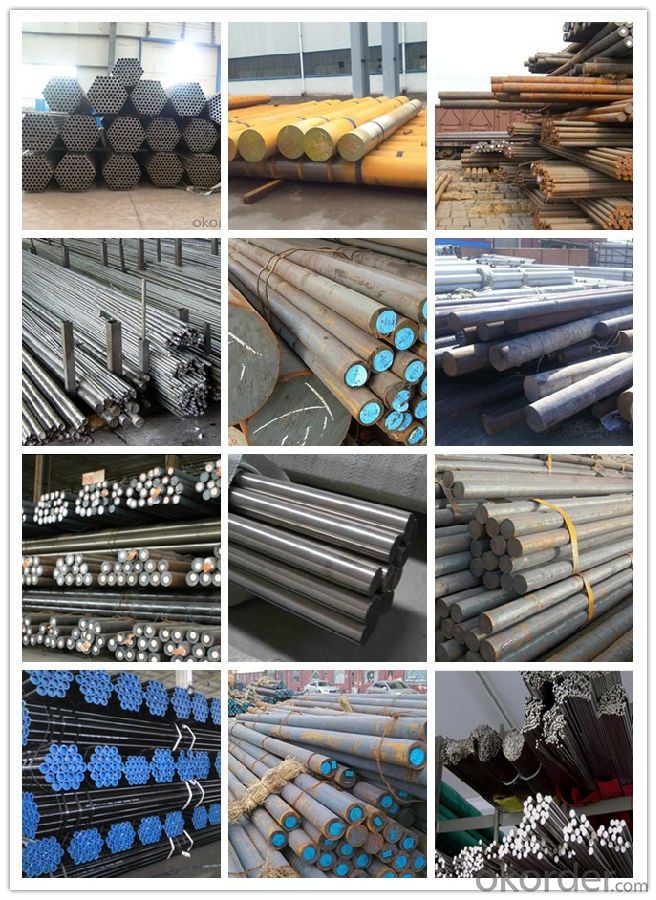
Workshop show
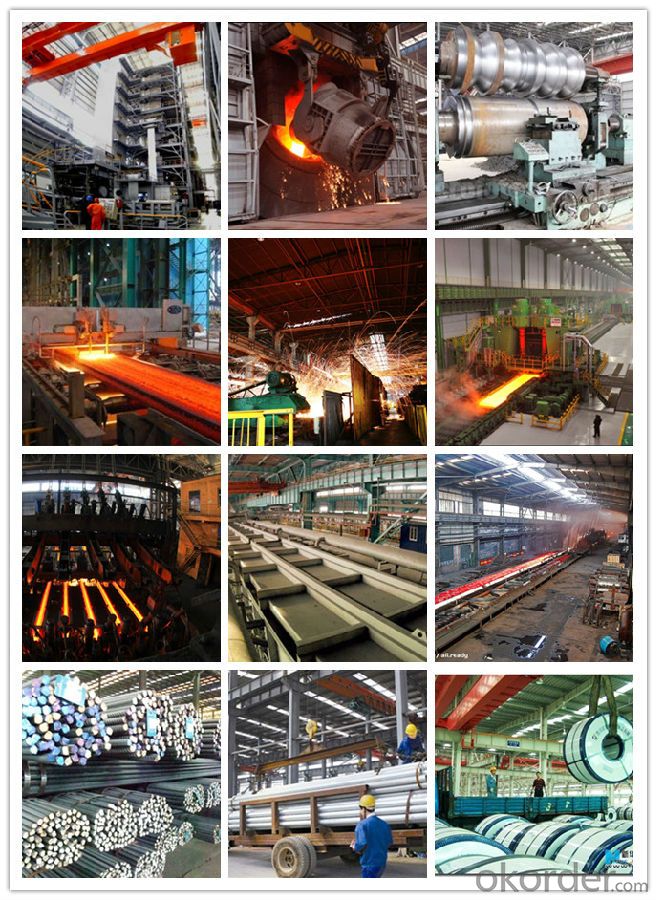
- Q:How is magnetic stainless steel used in the production of magnetic components?
- Magnetic stainless steel is commonly used in the production of magnetic components due to its unique combination of corrosion resistance and magnetic properties. It is particularly suitable for applications where both strength and resistance to oxidation are required. The stainless steel is typically formed into various shapes and sizes, such as rods or sheets, and then processed into the desired magnetic component. This can include items like magnets, transformer cores, or magnetic shielding components. The magnetic properties of the stainless steel facilitate efficient magnetization, making it a valuable material for the production of magnetic components in various industries.
- Q:What are the different techniques used for joining special steel?
- Some of the different techniques used for joining special steel include welding, brazing, soldering, and adhesive bonding. Each technique has its own advantages and considerations depending on the specific application and properties of the steel being joined. Welding involves melting and fusing the steel together, while brazing and soldering use a lower temperature to join the steel with a filler material. Adhesive bonding uses a strong adhesive to bond the steel surfaces together. The choice of technique depends on factors such as the strength required, the materials being joined, and the desired properties of the final joint.
- Q:What are the different methods of improving the impact toughness of special steel?
- There are multiple ways to increase the impact toughness of special steel. Here are a few commonly utilized techniques: 1. Heat Treatment: Heat treatment is a highly effective method that involves subjecting the steel to specific heating and cooling processes. For example, quenching and tempering can significantly enhance the impact toughness of steel. Quenching rapidly cools the heated steel in a liquid medium like oil or water, while tempering involves reheating the quenched steel to a specific temperature and then slowly cooling it. This process refines the steel's microstructure, making it more resistant to fractures and improving its impact toughness. 2. Alloying: Another method is alloying, which entails adding specific elements to the steel composition. Elements like nickel, chromium, and molybdenum can enhance the toughness of steel by modifying its microstructure and improving its resistance to impact. These alloying elements reduce the formation of brittle phases and enhance the steel's ductility. 3. Grain Refinement: The grain size of steel is crucial in determining its impact toughness. By refining the grain size, the steel can exhibit improved toughness. This can be achieved through techniques like controlled rolling or severe plastic deformation. These methods break down large grains and promote the formation of smaller, more uniform grains, resulting in enhanced toughness. 4. Shot Peening: Shot peening is a surface treatment technique that involves bombarding the steel surface with small metallic or ceramic shots. This process induces compressive stress on the surface, reducing the likelihood of crack propagation and improving impact toughness. 5. Welding Techniques: When welding special steel, specific techniques can be employed to enhance its impact toughness. Preheating the steel before welding and controlling welding parameters like heat input and cooling rate help reduce the formation of brittle phases and improve the toughness of the welded joint. It's important to consider various factors like the desired level of toughness, the steel composition, and the intended application when selecting the appropriate method for improving the impact toughness of special steel. A comprehensive understanding of the steel's properties and specific requirements is crucial in determining the most suitable method for enhancing its impact toughness.
- Q:What are the different methods for improving the electrical conductivity of special steel?
- Special steel can have improved electrical conductivity through various methods. One common approach involves adding alloying elements like copper or silver, which increase the number of free electrons in the steel, thereby enhancing its electrical conductivity. Another option is subjecting the steel to heat treatment processes like annealing or normalizing. These heat treatments refine the steel's microstructure, reducing impurities and promoting electron movement. Surface treatments, such as electroplating or coating the steel with conductive materials like copper or nickel, also enhance its electrical conductivity. These treatments create a conductive layer on the steel's surface, facilitating better electron flow. Furthermore, refining the steel's grain size through techniques like grain boundary engineering or severe plastic deformation can improve its electrical conductivity. Smaller grain sizes enable more efficient electron movement and minimize scattering, resulting in improved conductivity. Lastly, proper cleaning and removal of surface contaminants or oxides significantly enhance the electrical conductivity of special steel. By eliminating impurities and ensuring a clean surface, the steel can establish better contact and conductivity. It is important to consider that the specific method chosen to improve the electrical conductivity of special steel depends on the intended application and the desired level of conductivity. Different industries and applications may require tailored approaches to achieve the desired outcomes.
- Q:What are the requirements for special steel used in agricultural machinery?
- Different components or parts in agricultural machinery have varying requirements for special steel. However, there are common requirements that generally apply to most agricultural machinery. 1. To withstand harsh conditions including heavy loads, friction, and exposure to elements, special steel used in agricultural machinery must have high strength and durability. 2. Special steel should possess good corrosion resistance properties to prevent rusting and degradation over time, as agricultural machinery is often exposed to moisture, chemicals, and other corrosive substances. 3. To ensure prolonged service life and reduce maintenance costs, special steel should have excellent wear resistance, as components like blades, gears, and bearings undergo repetitive and abrasive actions. 4. Special steel should exhibit high toughness to absorb sudden impacts, shock loads, and vibrations without fracture or fatigue failure, as agricultural machinery encounters these forces during operation. 5. Special steel should have good machinability, including properties like good formability, weldability, and ease of heat treatment, to enable efficient and accurate machining processes during manufacturing. 6. While meeting the above requirements, special steel used in agricultural machinery should also be cost-effective, striking a balance between performance and cost without compromising quality and performance. In conclusion, the selection of special steel for agricultural machinery should consider specific application requirements such as load capacity, environmental conditions, and expected service life. Meeting these requirements ensures efficient and reliable operation with minimal downtime.
- Q:How does special steel perform in terms of fatigue resistance?
- Special steel typically exhibits excellent fatigue resistance due to its high strength, toughness, and ability to withstand repeated loading and stress cycles without failure. Its unique composition and manufacturing processes enhance its resistance to fatigue, making it a preferred choice in applications where durability and longevity are critical, such as aerospace, automotive, and engineering industries.
- Q:How does special steel contribute to the aerospace racing industry?
- The aerospace racing industry heavily relies on special steel due to its superior strength, durability, and performance characteristics, which are essential for the demanding conditions and requirements of high-speed racing. One of the primary contributions of special steel to the aerospace racing industry lies in its capacity to withstand extreme temperatures and pressures. Special steel alloys, such as nickel-based superalloys, are specifically designed to maintain their mechanical properties even under high temperatures. This makes them highly suitable for withstanding the intense heat generated during racing. These alloys also exhibit exceptional creep resistance, enabling the components to endure prolonged exposure to elevated temperatures without experiencing any deformation or failure. Furthermore, special steel alloys possess remarkable strength-to-weight ratios, giving the aerospace racing industry a competitive advantage. The high strength of these alloys allows for the design and construction of lighter and more efficient racing components, including engine parts, landing gears, and structural elements. As a result, the overall weight of the aircraft is reduced, thereby enhancing its performance and speed while ensuring structural integrity and safety. In addition, special steel offers excellent corrosion resistance, which is crucial in the aerospace racing industry. The harsh conditions encountered during racing, such as exposure to moisture, chemicals, and atmospheric elements, can lead to corrosion and deterioration of vital components. However, special steel alloys, such as stainless steel, demonstrate high resistance to corrosion, guaranteeing the longevity and reliability of racing aircraft. Moreover, the unique metallurgical properties of special steel, such as high fatigue and fracture resistance, contribute significantly to the safety and reliability of the aerospace racing industry. The high fatigue strength of these alloys allows them to withstand repeated loading and unloading cycles without developing cracks or experiencing failures. This is particularly important in high-speed racing, where components undergo significant stress and strain. Additionally, special steel's exceptional fracture toughness ensures that any potential cracks or flaws do not propagate catastrophically, minimizing the risk of catastrophic failures during racing. In conclusion, special steel plays a critical role in the aerospace racing industry by providing superior strength, durability, and performance characteristics. Its ability to withstand extreme temperatures, offer excellent strength-to-weight ratios, resist corrosion, and exhibit high fatigue and fracture resistance make it an indispensable material for constructing racing aircraft components. Ultimately, the use of special steel in the aerospace racing industry enhances the performance, speed, safety, and reliability of racing aircraft, pushing the boundaries of aerospace technology and propelling the industry forward.
- Q:How does special steel contribute to improving product reliability?
- Special steel contributes to improving product reliability in several ways. Firstly, special steel is known for its exceptional strength and durability, which enhances the overall performance and lifespan of various products. It can withstand heavy loads, resist wear and tear, and maintain its structural integrity even under extreme conditions. Secondly, special steels often possess excellent corrosion resistance properties, preventing rust and deterioration over time. This is particularly crucial for products exposed to moisture or harsh environments. Additionally, special steel allows for precise manufacturing and provides consistent material properties, ensuring the quality and reliability of the final product. By utilizing special steel, manufacturers can enhance the reliability of their products, offering customers a longer lifespan, reduced maintenance requirements, and increased safety and performance.
- Q:What are the properties of tungsten alloys?
- Tungsten alloys possess several notable properties, including exceptional hardness, high melting point, excellent corrosion resistance, and remarkable density. These alloys are also known for their exceptional strength, resistance to wear, and ability to retain their shape even under extreme temperatures. Furthermore, tungsten alloys exhibit good electrical and thermal conductivity, making them suitable for various applications in industries such as aerospace, automotive, and defense.
- Q:How does special steel contribute to the aviation industry?
- Special steel plays a crucial role in the aviation industry by contributing to the safety, performance, and efficiency of aircraft. Firstly, special steel is used in the manufacturing of critical components of aircraft, including landing gears, engine parts, and structural elements. These components require materials with exceptional strength, durability, and resistance to fatigue and corrosion. Special steel, such as stainless steel or nickel-based alloys, offers these properties, ensuring the structural integrity and safety of the aircraft. Secondly, special steel enables the development of lightweight aircraft, which is a key requirement in the aviation industry. By utilizing high-strength alloys, manufacturers can reduce the weight of aircraft components without compromising their structural integrity. This results in fuel savings, extended range, and increased payload capacity, ultimately enhancing the efficiency of aircraft operations. Furthermore, special steel is crucial in enhancing the performance and reliability of aircraft engines. Steel alloys with high-temperature resistance and excellent mechanical properties are used in the production of turbine blades, combustion chambers, and exhaust systems. These components withstand extreme temperatures and stress levels, allowing engines to operate efficiently and reliably. Moreover, special steel contributes to the aviation industry by enabling innovative designs and technologies. With continuous advancements in material science, manufacturers are able to develop new steel alloys with improved properties, such as enhanced resistance to wear, thermal stability, or fatigue resistance. These innovations unlock new possibilities for aircraft design, performance, and fuel efficiency. In conclusion, special steel plays a vital role in the aviation industry by ensuring the safety, performance, and efficiency of aircraft. Its use in critical components, lightweight construction, engine manufacturing, and technological advancements contributes to the advancement of aviation, making air travel safer, more efficient, and more sustainable.
1. Manufacturer Overview |
|
|---|---|
| Location | |
| Year Established | |
| Annual Output Value | |
| Main Markets | |
| Company Certifications | |
2. Manufacturer Certificates |
|
|---|---|
| a) Certification Name | |
| Range | |
| Reference | |
| Validity Period | |
3. Manufacturer Capability |
|
|---|---|
| a)Trade Capacity | |
| Nearest Port | |
| Export Percentage | |
| No.of Employees in Trade Department | |
| Language Spoken: | |
| b)Factory Information | |
| Factory Size: | |
| No. of Production Lines | |
| Contract Manufacturing | |
| Product Price Range | |
Send your message to us
Alloy Steel Bar 25MoCr4 Steel Round Bar
- Loading Port:
- China main port
- Payment Terms:
- TT OR LC
- Min Order Qty:
- 25 m.t.
- Supply Capability:
- 10000 m.t./month
OKorder Service Pledge
OKorder Financial Service
Similar products
New products
Hot products
Related keywords
